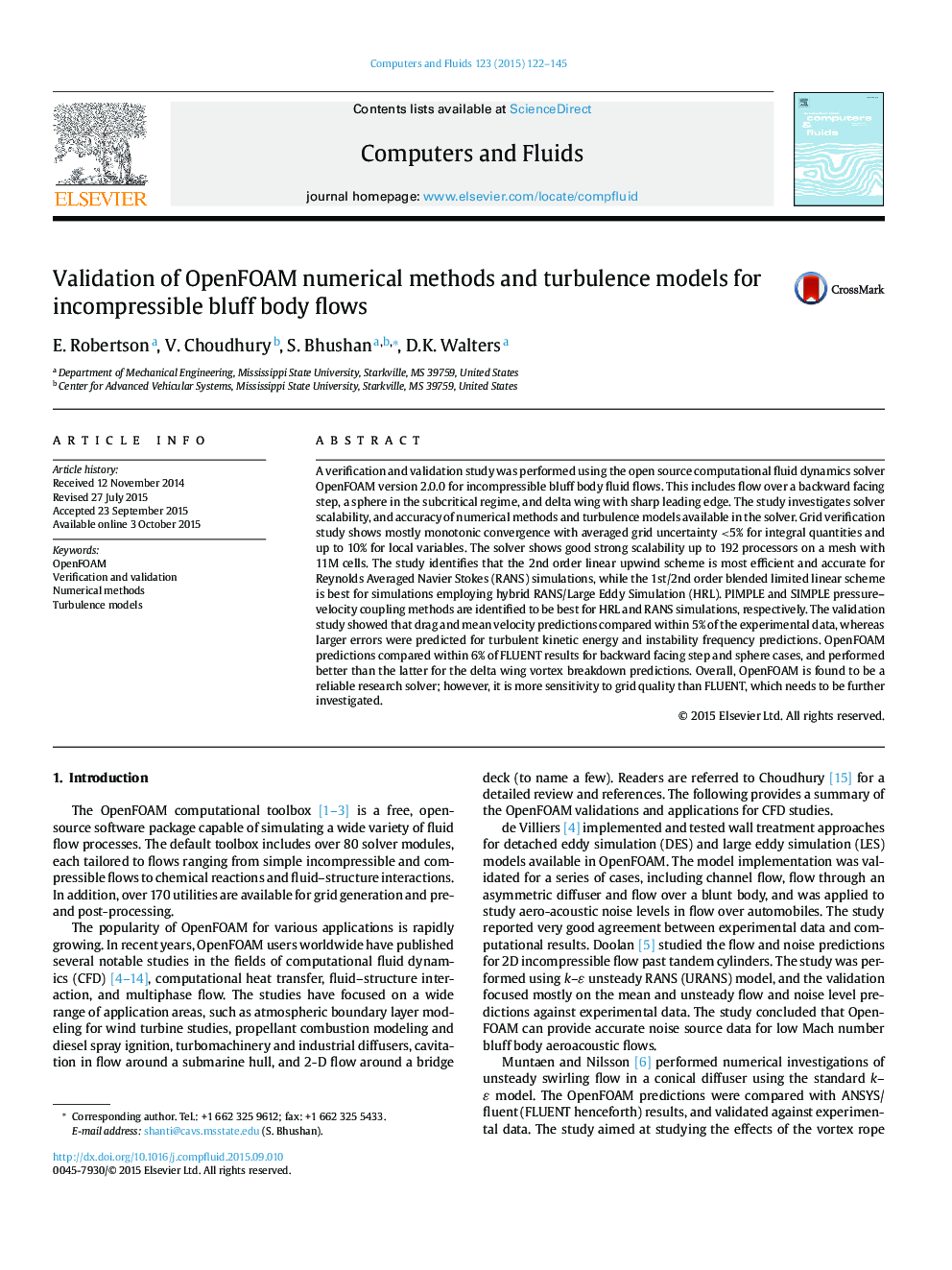| کد مقاله | کد نشریه | سال انتشار | مقاله انگلیسی | نسخه تمام متن |
|---|---|---|---|---|
| 761252 | 1462687 | 2015 | 24 صفحه PDF | دانلود رایگان |

• Grid verification and scalability studied of OpenFOAM.
• Validate OpenFOAM numerical methods and turbulence models.
• Validation for a range of canonical tests, and engineering application.
• User guidelines for best scheme/model options in OpenFOAM.
A verification and validation study was performed using the open source computational fluid dynamics solver OpenFOAM version 2.0.0 for incompressible bluff body fluid flows. This includes flow over a backward facing step, a sphere in the subcritical regime, and delta wing with sharp leading edge. The study investigates solver scalability, and accuracy of numerical methods and turbulence models available in the solver. Grid verification study shows mostly monotonic convergence with averaged grid uncertainty <5% for integral quantities and up to 10% for local variables. The solver shows good strong scalability up to 192 processors on a mesh with 11M cells. The study identifies that the 2nd order linear upwind scheme is most efficient and accurate for Reynolds Averaged Navier Stokes (RANS) simulations, while the 1st/2nd order blended limited linear scheme is best for simulations employing hybrid RANS/Large Eddy Simulation (HRL). PIMPLE and SIMPLE pressure–velocity coupling methods are identified to be best for HRL and RANS simulations, respectively. The validation study showed that drag and mean velocity predictions compared within 5% of the experimental data, whereas larger errors were predicted for turbulent kinetic energy and instability frequency predictions. OpenFOAM predictions compared within 6% of FLUENT results for backward facing step and sphere cases, and performed better than the latter for the delta wing vortex breakdown predictions. Overall, OpenFOAM is found to be a reliable research solver; however, it is more sensitivity to grid quality than FLUENT, which needs to be further investigated.
Journal: Computers & Fluids - Volume 123, 21 December 2015, Pages 122–145